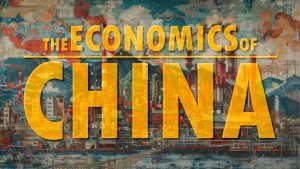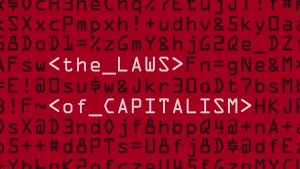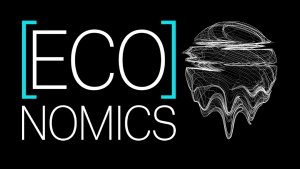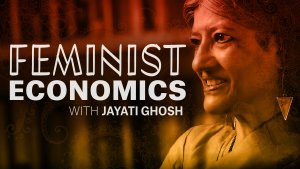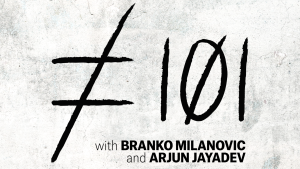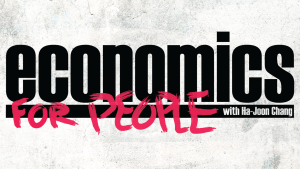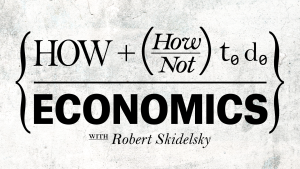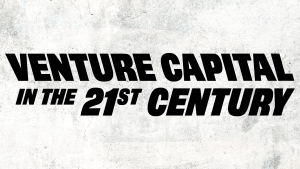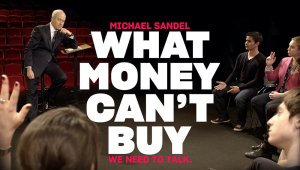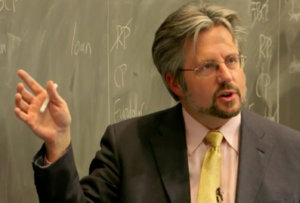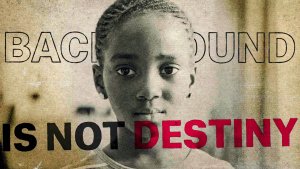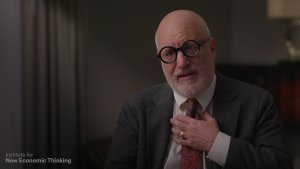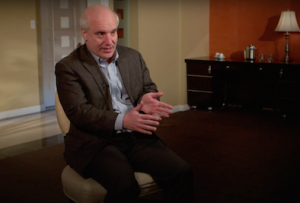In this six-part series, Professor Durlauf leads us on a powerful analysis on the economics of childhood, with particular focus on generational mobility, persistent inequality, and the responsibility of economics in contributing to the transformational power of policy.
EPISODE 1
What is Mobility?
And more importantly, "mobility for who?"
Professor Durlauf introduces the economics of mobility and gives an overview of why economics studies the inequality of opportunity. Using the United States as the primary example in the series, he provides the historical and current evidence of how economics identifies the inequality of opportunity and income inequality in general. He reminds us of the two different lenses scholars can examine mobility, intergenerationally (comparing parents to their children) and intragenerationally (social movements throughout one’s lifeline). Overall, he advocates the important concept of “education as steppingstone” when thinking about mobility.
| SUBJECT | REFERENCE | LINK | TIME STAMP |
|---|---|---|---|
Intro | |||
American Exceptionalism | |||
Equity-Efficiency Tradeoff | |||
Julian Le Grand | |||
Gatsby Curve | Miles Corak | Income Inequality, Equality of Opportunity, and Intergenerational Mobility, AEA | |
INET Interview | |||
Relative Mobility | Berman 2020 | ||
Education as a Steppingstone | |||
NY Times | College Attendance based on Parents Income and Colleges Selectivity – NYT, Chetty 2017 | ||
Chetty et al. 2017 | |||
Graduation rates by aptitude test score | |||
Early Childhood Investment | |||
James Heckman | |||
Intra/Intergenerational persistence | |||
Jo Blanden | |||
Inter and Intra Persistence | |||
Bottlenecks | |||
Joseph Fishkin | |||
Corak - Gatsby Curve |
EPISODE 2
The Importance of Mobility in Societies
Professor Durlauf addresses the more philosophical aspects of mobility, like fairness and what people deserve. This lecture reminds us that behind all the mathematics and models there is a philosophical question of fairness that economists should consider when analyzing mobility. After supporting the philosophical argument with empirical evidence, he leaves the audience with three key arguments why society should care about mobility: 1. The general well-being of people, 2. That by addressing lack of mobility we also address injustices, and 3. Societies are more productive when they are more mobile.
| SUBJECT | REFERENCE | LINK | TIME STAMP |
|---|---|---|---|
Intro | |||
Welfarism | Utilitarian and Welfarism | Amartya Sen | |
Intro | |||
Mortality Tables | Log Mortality Rates over the Life Cycle, by income percentile and sex. (2016) | ||
Same as above | |||
Fairness of Mobility | |||
John Roemer | |||
Regina Baker 2022 | UChicago - Historical Racial Regimes (HRR) | ||
Southern Poverty (2010-2018) | Same as above. | ||
Predicted Probabilities of Poverty | OUP - Williams and Baker 2021 | ||
Desert | |||
Definition | |||
Desert and Distributive Justice 1971 | Rawls Theory of Justice – p. 913-14, 88-89, 273-77. HUP | ||
George Sher 1987 | Desert PEP | ||
Hoxby and Avery 2013 | Distribution of High-Achieving Students’ College Applications by Student-College Match | ||
Bhattacharya and Mazumder 2011 | Upward Mobility Conditional on AFQT Scores: Whites vs. Blacks | ||
Equality of Opportunity | |||
Plot: GDP per capita growth (Y) Gini Coefficient (x) WDB | |||
Main Takeaways |
|
EPISODE 3
Measuring Mobility
Professor Durlauf explains the challenges faced in attempting to measure mobility and the equality of opportunity. While introducing the concepts of absolute and relative status within mobility statistics he explains the go-to measure of mobility: the intergenerational elasticity of income. Challenging the permanent income hypothesis, Durlauf shows how economics can come to different conclusions about income inequality depending on if the researcher uses a linear or non-linear model. To wrap up the episode, he talks about how researchers can use principles like Markov Chains, to get a better understanding of a person’s social position and life trajectory.
| SUBJECT | REFERENCE | LINK | TIME STAMP |
|---|---|---|---|
Intro | |||
Absolute Status | |||
Relative Status | |||
Mobility Statistics | |||
Intergenerational elasticity of income | |||
Jo Blanden | |||
Critique | |||
Permanent Income | Friedman | Permanent Income Hypothesis - | |
Lottery Income | Ian Walker | The economic analysis of lotteries – | |
Chang, Durlauf, Joon Y. Park | A Trajectories-Based Approach to Measuring Intergenerational Mobility – NBER | ||
Adolescent Signals | Proxy for quality of schools and neighborhoods adolescent are in. | ||
Poverty and Affluence Traps | Durlauf, Hoff, and Bowles | ||
Linear and Non-linear Function | |||
Sigmoid Function, S-shaped curves | |||
Chetty | The Geography of Upward Mobility in the United States | ||
Markov Chains | Simple explainer | ||
Otis Dudley Duncan (1968) | |||
Laurison, Dow, Chemof 2020 | Origin and Destination, Black Adults ages 25-69 |
EPISODE 4
Family Mechanisms
Professor Durlauf talks about the importance of family dynamics when it comes to mobility, and how one's parents impact their own lifetime income.
Starting with the famous Heckman Curve, he shows the transition of thought when it comes to how economists think about the influence of parent's income on a child’s lifetime income. For this reason, he then discusses how family mechanisms impact a child's cognitive and non-cognitive skills, which is another key predictor for a person’s future income earnings. Finally, Durlauf addresses a deeply moral and ethical question that economists usually assume away, the concept of genetics. While everyone has their own, unique genetic background, any analysis that claims any group differences are explained by genetic differences with respect to income and wealth is both intellectually, and morally unserious.
The four final takeaways for you to think about when it comes to the influence of parents' income on a child’s lifetime income are:
- Parental incomes matter
- Parental wealth matters
- Genetic components matter less
- Race is a determinant intergenerational status
| SUBJECT | REFERENCE | LINK | TIME STAMP |
|---|---|---|---|
Intro | 0:18 | ||
Davis and Mazumder 2022 | |||
James Heckman | |||
Heckman Curve | |||
College Wage Premium (Grogger and Eide 1995) | |||
James Heckman and Flavio Cunha | “The Technology of Skill Formation” AEA | ||
Almond, Currie, Duque (2018) | “Childhood Circumstances and Adult Outcomes: Act II” AEA | ||
Cognitive Skills + Personality Traits | |||
Schanzenbach et al. 2016 | Occupational Skill Requirements, 1980-2012 & Relationships btw Cognitive, Noncognitive Skills, and Earnings | ||
Same as above | |||
Cognitive and Non-Cognitive Skills are co-evolving | |||
In summary,
| |||
Distributions of Family 1963-2016 Urban Institute | |||
Genetics | |||
How can genetics be measured as an influence on mobility? | |||
Goldberger 1979 | |||
Identification Problem | Intermediate: ENCYCLOPEDIA Advanced: BC | ||
Bowles and Gintis 2002 | The Main Casual Channels of Intergenerational Status Transmission in the US | ||
Takeaways |
|
EPISODE 5
Social Mechanisms
Professor Durlauf defines his preferred theory when thinking about mobility, The Membership Theory of Inequality.
The Membership Theory of Inequality is the idea that an individuals’ beliefs, preferences, and opportunities are conditioned by their membership to different social identities (ethnicity, gender, religion, etc.). Then, over time, memberships evolve in response to interactions with one another. Finally, what results is persistent inequality and poverty for individuals in some membership groups and not in others. In other words, economic segregation is the key determinant to persistent inequality, and economic inequality generates further segregation.
Overall, the three key takeaways from Durlauf’s Membership Theory of Inequality are:
- Social outcomes are determined by beliefs, preferences & opportunities
- These factors provide the conditions of economic segregation
- The interaction between one and two
| SUBJECT | REFERENCE | LINK | TIME STAMP |
|---|---|---|---|
Intro | 0:16 | ||
The Memberships Theory of inequality | Durlauf papers that introduce and develop the theory. | “Associational Redistribution: A Defense,” 1996, SAGE “The Memberships Theory of Poverty: The Role of Group Affiliations In Determining Socioeconomic Outcomes,” 2000, HPU “Groups, Social Influences, and Inequality: A Memberships Theory Perspective on Poverty Traps,” 2006, SFI Interview – “How Kids Are Left Behind” INET | |
1. Beliefs, Preferences & opportunities are conditioned by group | Memberships a. Ethnicity b. Gender c. Religious | ||
Complementarities | |||
Methodological Individualism | |||
2.Memberships evolve in response to these interactions | |||
3. Persistent intergenerational inequality & poverty result | Durlauf 1996 | A Theory of Persistent Income Inequality - JSTOR | |
Fogli, Guerrieri 2019 | “The End of The American Dream? Inequality and Segregation in US Cities”, NBER | ||
Segregation is the fundamental determinant of persistent inequality | |||
Racial Segregation | |||
Card and Rothstein 2017 | |||
Manduca and Sampson 2019 | |||
Flint, Michigan | |||
Segregation is generated by economic inequality | |||
Cappellary 2021 | |||
Kearney and Levine 2016 | |||
Black Population in Chicago Census Tract | |||
Per pupil expenditure across school districts | |||
White and Black high school graduation. | Wodtke, Harding, and Elwert 2016 | ||
Key Takeaways | The Memberships Theory of inequality |
|
EPISODE 6
What is To be Done?
What policies–past, present, and future–make our society more equal and increase mobility?
Professor Durlauf takes on the penultimate question of all policymakers: “What is to be done?” He closely examines the outcomes of the following four proposed actions to illustrate why policies matter in understanding and shaping mobility:
- The Earned Income Tax Credit
- Early childhood investment
- Criminal Justice Reform
- Associational Redistribution
Professor Durlauf presents the difficulty of assessing and determining the effectiveness of policies that target mobility, which is, public policies have been extremely impactful in increasing mobility, but there is still much work to do. In particular, he ends the series with a powerful defense of Affirmative Action as a successful Associational Redistribution policy that directly, and positively impacted mobility. Thus, providing an empirical defense that goes against the latest decision by the Supreme Court.
| SUBJECT | REFERENCE | LINK | TIME STAMP |
|---|---|---|---|
| Intro | |||
Jencks 2015 | |||
Policies that Matter for Understanding mobility | |||
1. Earned Income Tax Credit | Jones, Simeonova, and Akee 2020 | ||
Same as above | |||
Decisions on funding public education | |||
Johnsonand Jackson 2019 | |||
Jackson et al. 2015 | |||
2.Early childhood investment | |||
Schanzenback and Bauer 2016 | |||
Johnson and Jackson 2019 | See above S and B again for Impacts of Head Start on Higher Education. J&J Effect of K-12 Spending on Year of completed education, by head start exposure status (poor children) | ||
Good early childhood investments have persistent positive consequences for children. | |||
3. Criminal Justice | |||
Petit, Sykes, and Western 2009 | |||
Exposure to incarceration by race and ethnicity | Sykes and Petit 2017 | ||
Identity and belonging | |||
Walton and Cohen 2011 | |||
See above | |||
4. Associational Redistribution | |||
Affirmative Action | |||
Bleemer 2022 | |||
What happened to Meritocracy?
|


